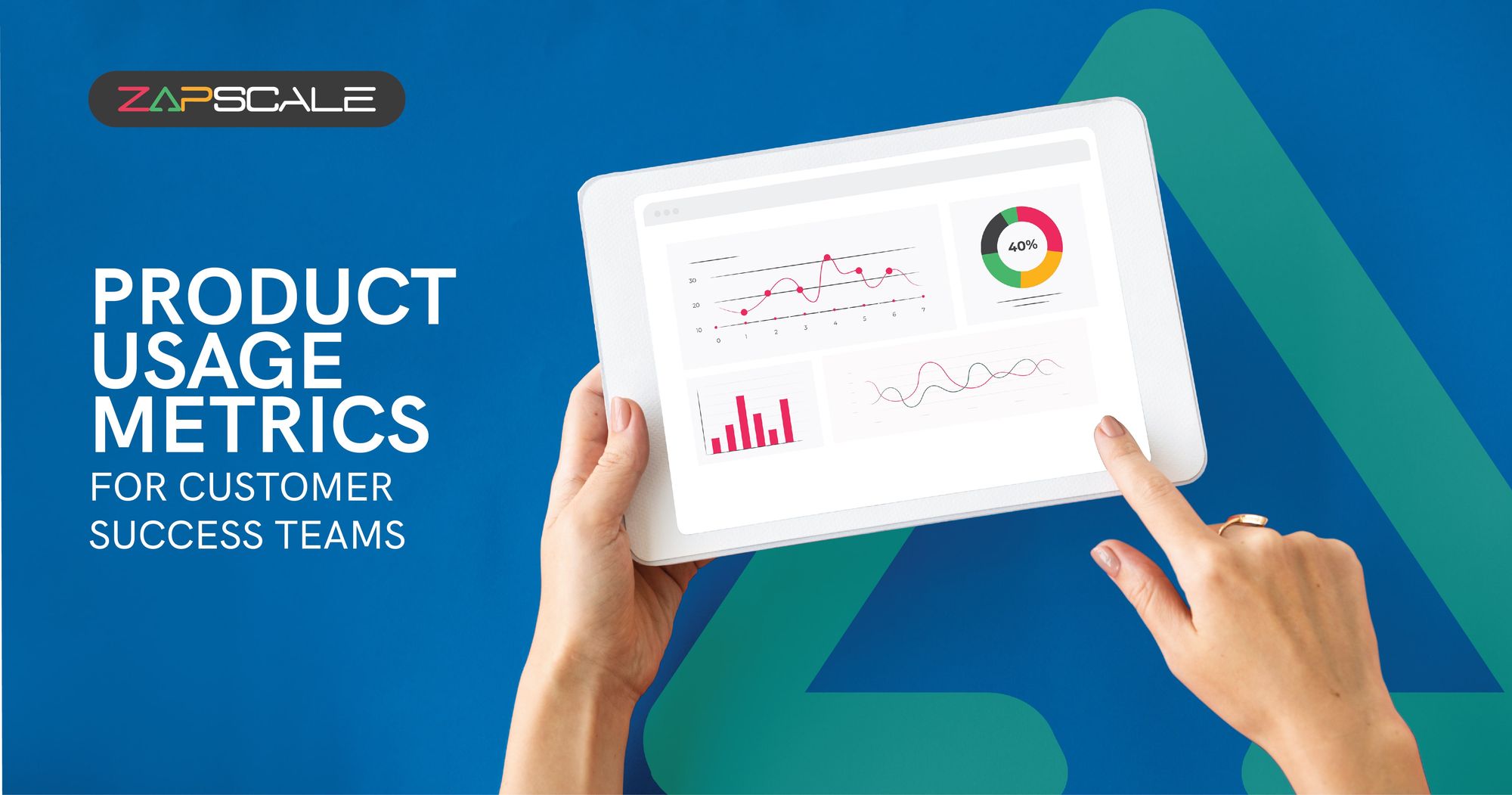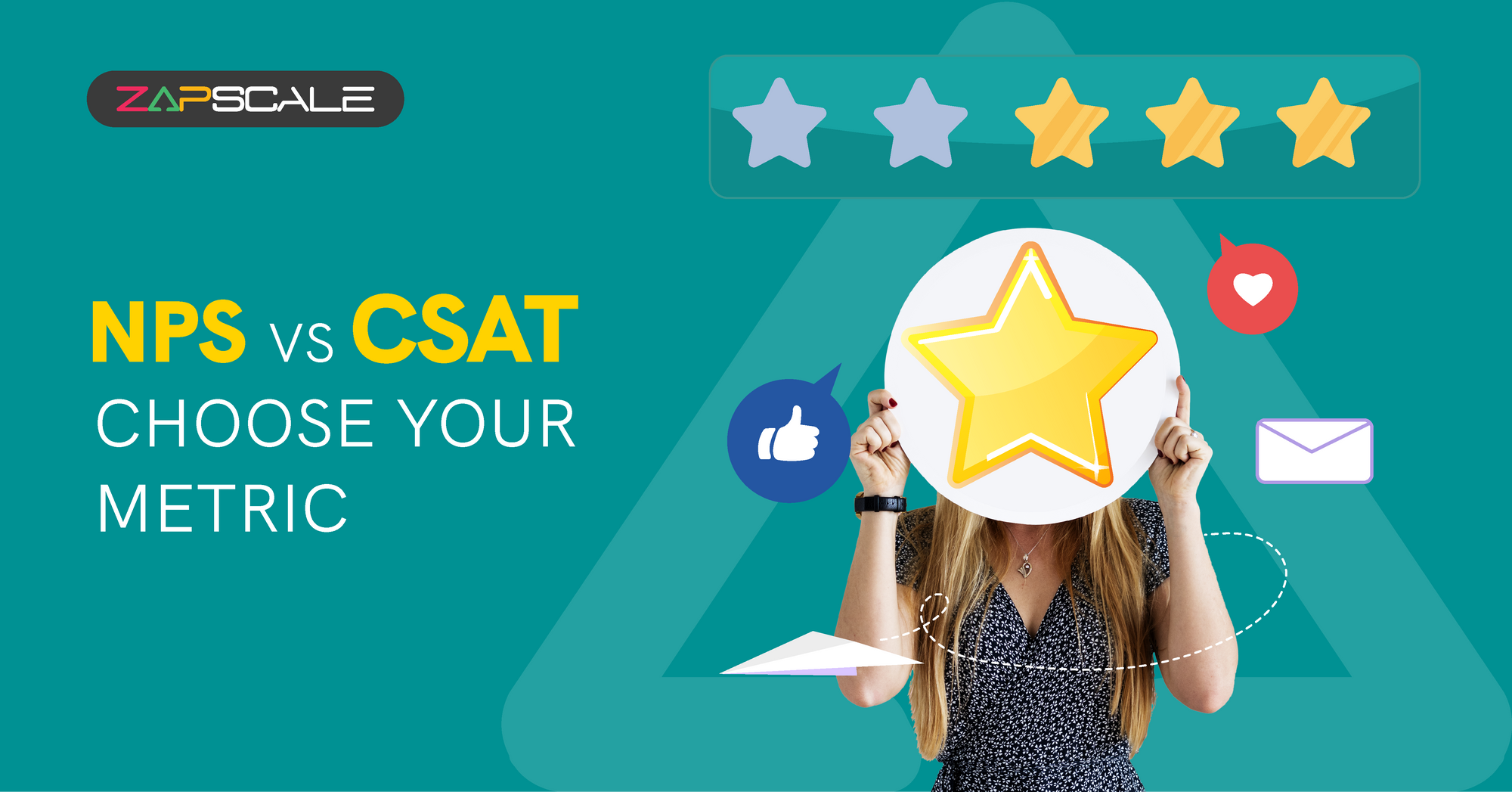CATEGORY > CS Metrics
Top 5 Product Usage Metrics For Your Customer Success Team

In today's competitive market, customer success is crucial for the growth and sustainability of any business. It is not enough to simply acquire new customers; it is equally important to ensure that they are satisfied with your product or service and continue to use it over time. To achieve this, customer success teams rely heavily on metrics to measure product usage and identify areas for improvement. In this article, we will discuss the top 5 product usage metrics that every customer success team should track to ensure their customers' success and ultimately drive business growth.
What is Product Usage?
Product usage refers to the extent to which customers are utilizing your product or service. It is a measure of how frequently and consistently customers engage with a product, and how much value they derive from it. By tracking product usage, businesses can better understand how customers are using their products, what features are most popular, and where they may need to make adjustments to improve customer satisfaction and retention.
Let's take a closer look at the top 5 metrics that customer success teams should track to measure product usage.
🚀 Product Usage Frequency
This metric measures how often customers are using the product over a specific period, enabling teams to identify accounts that may require additional support or those ready for expansion.
🚀 Average Time Spent On The Product
This metric provides crucial insights into customer engagement by measuring the duration of the average login. This information helps businesses understand how much customers are interacting with the product and can highlight potential issues. For instance, a low average time in the application may suggest a lack of familiarity with the product, indicating the need for additional training or support to improve customer understanding.
🚀 Feature Usage
To ensure your customers are leveraging your product's beneficial features, it's important to track the frequency of their usage. This metric can highlight areas where customers may need additional education on the value of certain features. Low usage rates may indicate a need for targeted campaigns or engagement strategies to better educate your customers on how to maximize the benefits of your product.
🚀 Active Users
'Active Users' is a key metric that measures the number of users actively engaged with your product within an account over time. By analyzing this metric across different customer segments, you can identify patterns and trends that can inform your future campaigns. For instance, if you notice a consistent decline in usage six months after onboarding, it could signal that customers are experiencing product fatigue and may require a re-engagement campaign to keep them using your product.
🚀 License Utilization
By measuring the number of active accounts throughout the last year, you can develop a trend line that closely resembles a customer’s experience of value. A customer that is approaching its maximum license allocation is a prime target for expansion.
It's crucial to remember that metrics are only valuable when they drive action. To ensure your metrics are actionable, it's important to use them to establish clear goals and KPIs for each stage of the customer journey. By doing so, you can optimize your approach to promoting customer lifetime value and ensure that your metrics are truly helping to drive results.
To effectively capture and analyze data related to product usage, there are several analytical tools available, such as Pendo, Mixpanel, and Amplitude. However, for customer success teams, it's important to consider various other factors beyond product usage. This is where a customer success platform (CSP) comes in handy.
With a CSP, you can capture, store, analyze, and share customer data in a single location. By tracking key metrics, you can gain a comprehensive understanding of your customers and detect any signs that they may be experiencing difficulties. Armed with this information, your team can take the appropriate actions to help your customers succeed.
The Resulting Impact On Your Business

🚀 Unlocking Insights
By leveraging product usage metrics, businesses can gain valuable insights into their performance across various functions, including engagement, sales, marketing, and customer support. These insights can help businesses understand how their customers view their products and services and identify areas for improvement.

🚀 Informed Decision Making
Access to product usage metrics enables businesses to make data-driven decisions that drive growth and shape their future. By analyzing these metrics, you can figure out ways to improve your products, cut down on unnecessary spending, strengthen your relationships with customers, boost your revenue, and build a better brand image. Overall, having these metrics at your fingertips can help you make smarter, more informed decisions that benefit your business in the long run.

🚀 Understanding Your Customers Better
Product usage metrics provide businesses with a deeper understanding of how their customers interact with their products, enabling them to deliver better a customer experience, boost customer retention, and refine their messaging to resonate with their audience.

🚀 Boosting Your Revenue
One of the great things about using product usage metrics is that they help businesses to spot any challenges that customers face in adopting or using their products. This knowledge can then be used to fine-tune the company's operations, improve sales and ultimately increase revenue. By identifying these obstacles, businesses can find ways to overcome them and make it easier for customers to use their products.

🚀 Boosting Your Bottom Line
By monitoring product usage metrics, companies can identify processes and investments that are ineffective or costly. This can help businesses reduce their spending and channel resources into their most effective initiatives, resulting in lower costs overall. It's a great way for companies to optimize their spending and focus on the areas that really matter to their business.
In summary, monitoring and analyzing product usage metrics empowers customer success teams to gain valuable insights, make well-informed decisions, enhance their understanding of customers, increase revenue, and optimize their overall performance.
FAQs
1. What are the top product usage metrics?
Track active users, feature adoption, and usage frequency to gauge how well your product is being used and which features are popular.
2. How do product usage metrics help customer success?
Tracking product usage metrics helps you understand customer engagement and identify areas where they may need additional support. It allows your team to proactively address issues, drive feature adoption, and enhance the overall customer experience, eventually improving customer satisfaction and retention.
3. What should I do if the metrics indicate poor product usage?
If metrics indicate low engagement and feature adoption, start by analyzing customer feedback to understand its root cause. Consider providing targeted training, improving onboarding processes, or refining product features to improve product usage. Regularly review and adjust your strategy to better align with customer needs and improve engagement.
ABOUT THE AUTHOR
Popular from CS Metrics
Quality Content,
Straight To Your Inbox!
Subscribe for the latest blogs, podcasts, webinars, and events!

Write a Blog
If you have experience in CS and
a flair for writing, we’d love to
feature you.
Write to us on
hello@zapscale.com






